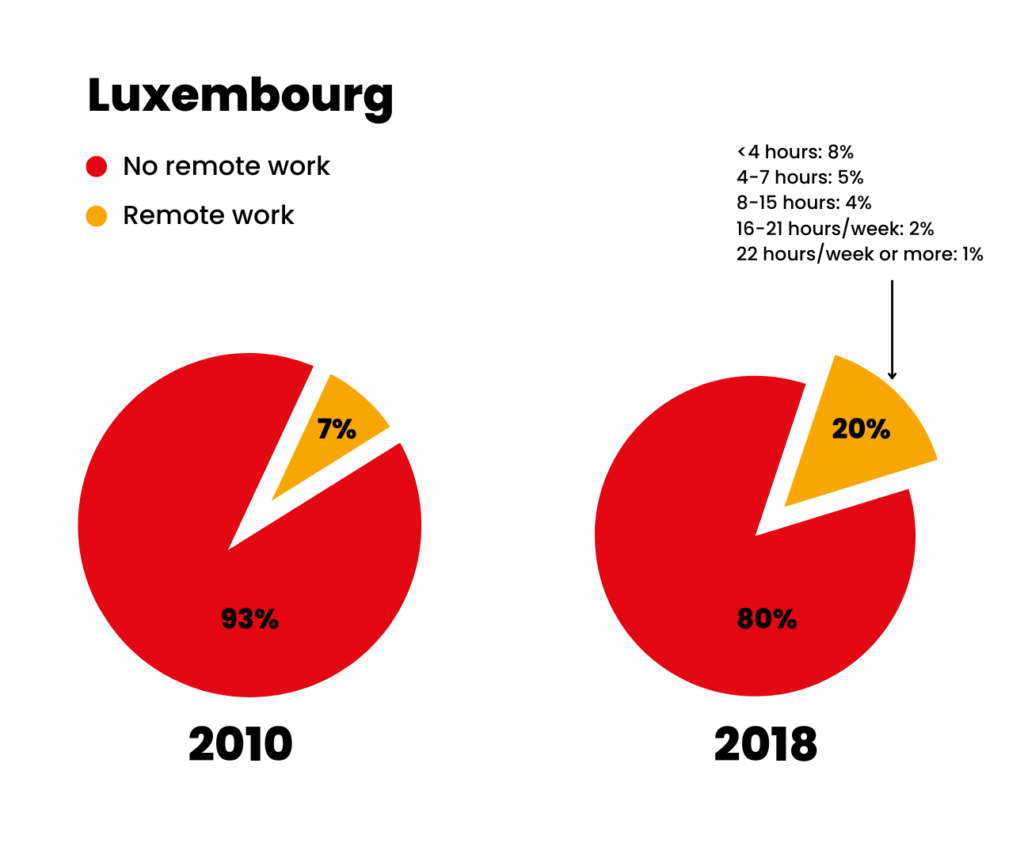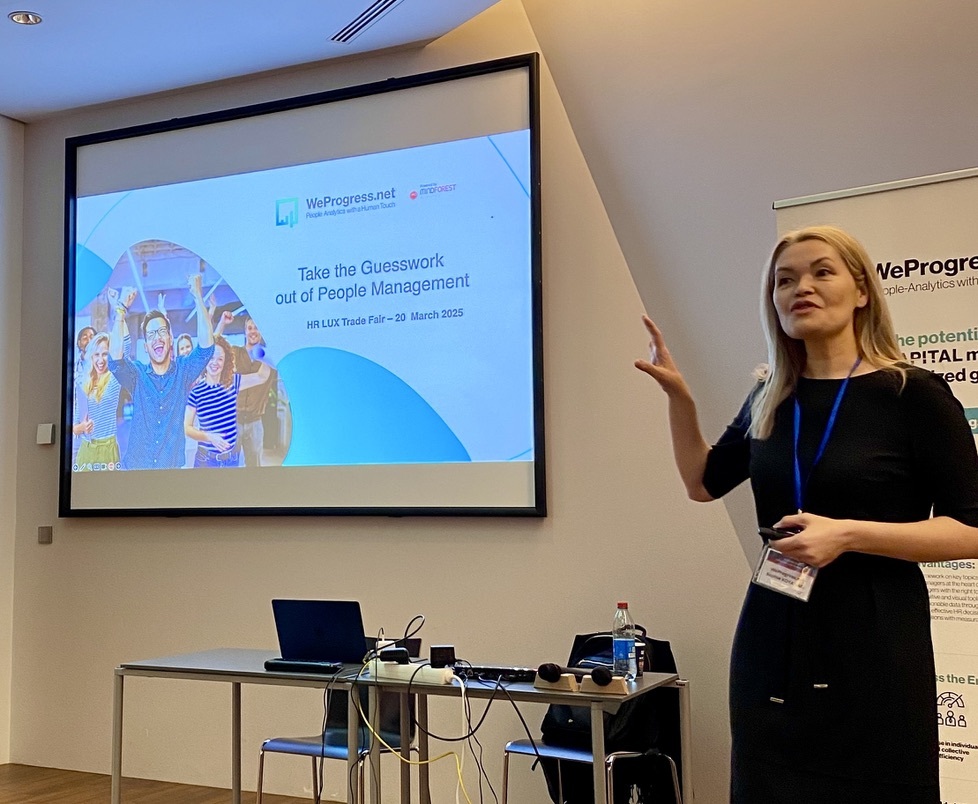Travailler à distance ? Comment s'orienter vers un engagement accru !
Vous vous demandez pourquoi l'engagement fait l'objet d'un tel engouement ces derniers temps ? En se basant sur des études réalisées en 2017, Gallup a constaté que...
au Luxembourg, environ 80% des personnes interrogées se sentent désengagées dans leur travail et 12% se sentent activement désengagées - et le Luxembourg fait partie des pays qui obtiennent de meilleurs résultats que la plupart des autres !
Cela signifie que de nombreuses entreprises doivent faire face à des employés désengagés ou activement désengagés, qui ne donnent pas le meilleur d'eux-mêmes, ce qui a inévitablement un impact direct sur leurs niveaux de productivité. Dans le cas de l'Allemagne, Gallup a estimé que la perte de productivité due aux employés activement désengagés se situait entre 73 et 95 milliards d'euros par an.[1]. C'est pourquoi il est devenu crucial pour les entreprises de prendre en considération sujet de l'engagement et de se demander comment ils peuvent redresser la situation et motiver leurs employés.
En tant qu'entreprise spécialisée dans la gestion du changement depuis près de 20 ans, MindForest a travaillé avec une grande variété d'entreprises et a régulièrement expérimenté la façon dont elles se débattent avec l'engagement des employés. C'est pourquoi MindForest a décidé de développer sa propre méthodologie appelée "Engagement et performance" pour aider les entreprises à développer et à maintenir l'engagement de leurs employés. La méthodologie est basée sur une compilation de différentes théories de l'engagement tout en tenant compte de sa propre expérience. Plus précisément, la méthodologie comprend une première analyse des neuf facteurs clés de l'engagement et détecte les lacunes éventuelles. De cette manière, MindForest aide à identifier les causes profondes des déficiences identifiées et peut ensuite proposer un plan d'action. plan d'action adaptée à la situation actuelle de l'entreprise.
Parallèlement, une autre tendance qui s'est développée au cours de la dernière décennie concerne le travail à distance. L'innovation dans les technologies de l'information et de la communication a facilité l'accès à ce type de modèle de travail. Néanmoins, le travail à distance peut prendre différentes formes, allant de quelques heures par semaine à un temps plein, en fonction de la culture et de la stratégie de l'entreprise. Le STATEC a analysé la situation au Luxembourg et a publié les statistiques suivantes[2]:

Quand peut-on parler de travail à distance ? Le STATEC a pris en compte trois éléments principaux[2]:
- L'utilisation des technologies de l'information et de la communication,
- Travailler en dehors du bureau physique,
- La régularité de ce mode de travail.
Le travail à distance en tant que nouveau modèle obligera les managers à revoir leurs processus et leurs habitudes afin de pouvoir maintenir les niveaux d'engagement de leurs employés et d'essayer de transformer leurs employés désengagés en employés engagés.
Quels sont les impacts du travail à distance ?
Il est important de comprendre que le travail à distance a également un impact significatif sur les employés et leurs habitudes de travail (actuelles), même si, selon la manière dont il est géré et mis en œuvre, il peut également représenter un avantage pour les employés. une formidable opportunité pour les organisations. Néanmoins, les entreprises doivent être conscientes des défis auxquels les gestionnaires peuvent être confrontés et de la nécessité de prendre certaines précautions, car chaque opportunité a son revers.
Par exemple, si le travail à distance permet d'améliorer l'équilibre entre vie professionnelle et vie privée, il peut constituer un défi pour d'autres, qui ont tendance à se surmener et à ne pas fixer d'horaires de travail réguliers, au détriment de leur temps libre.
En outre, si certaines personnes ont tendance à se sentir plus autonome lorsque l'on travaille à domicile, pouvoir mieux se concentrer et planifient leur propre journée, d'autres deviennent anxieux de ne plus exercer de contrôle direct et de commencer microgestion.
Certains aspects du travail à distance sont résumés ci-dessous :
- Équilibre entre vie professionnelle et vie privée
- Réduction du temps de trajet
- Flexibilité du temps de travail
- Autonomie accrue
- Réduction du stress
- Réduction des coûts
- Diminution du sentiment d'appartenance
- Questions de communication
- Surmenage
- Micromanagement
Que peuvent faire les managers pour maintenir le niveau d'énergie de leurs employés et s'assurer qu'ils sont motivés et connectés ?
Pour MindForest, les managers sont des acteurs clés pour s'assurer que leurs employés restent... motivés et engagés même s'ils travaillent à distance. Nous sommes tous engagés au travail pour des raisons différentes, c'est pourquoi il n'existe pas de formule magique ou d'ensemble de règles qui convienne à tous. Toutefois, les responsables peuvent contrôler certains aspects essentiels et, sans trop d'efforts, veiller à ce que le processus se déroule sans heurts.
Dans ce contexte, MindForest propose huit règles d'or à mettre en œuvre afin de contribuer à l'engagement des employés travaillant à distance :
La numérisation du lieu de travail posera de nombreux défis aux entreprises, parmi lesquels la question de l'engagement des salariés occupera une place importante. Elles devront adopter de nouvelles approches et trouver des moyens innovants pour maintenir l'engagement de leurs employés. Il est maintenant temps pour les entreprises de collaborer avec leurs employés pour développer ensemble le lieu de travail du futur et ainsi s'assurer que cela contribuera à développer leur sentiment d'appartenance et d'engagement.
Laissez-nous vous aider !
VOUS SOUHAITEZ RECEVOIR NOS DERNIÈRES INFORMATIONS?
Articles associés
 Take the Guesswork out of People Management
Take the Guesswork out of People Management
 Des processus aux personnes : atteindre la qualité
Des processus aux personnes : atteindre la qualité
 Oser la transformation positive : Et si le capital émotionnel positif était la clé d'un changement durable ?
Oser la transformation positive : Et si le capital émotionnel positif était la clé d'un changement durable ?
 Pourquoi engager des professionnels de la gestion du changement ? Nous pouvons le faire seuls !
Pourquoi engager des professionnels de la gestion du changement ? Nous pouvons le faire seuls !
 Transformation numérique et gestion du changement : Leçons partagées lors d'un événement organisé par Cebi et MindForest
Transformation numérique et gestion du changement : Leçons partagées lors d'un événement organisé par Cebi et MindForest



